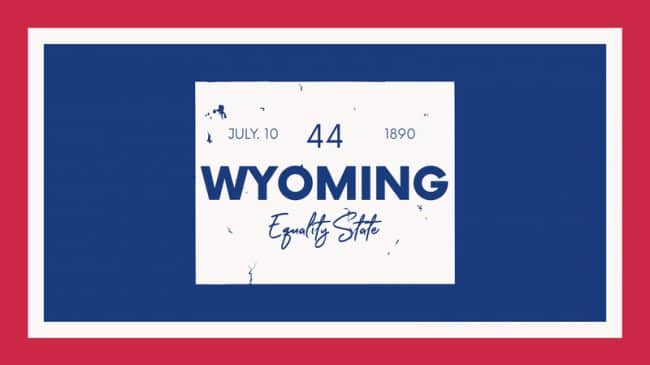More money is going to state highways, but there has been very little progress in improving their condition according to the 21st Annual Highway Report by Reason Foundation.
“Many of the easiest repairs and fixes to state highway and bridge systems have already been made and the rate of progress is slowing down,” said David T. Hartgen, lead author of the Annual Highway Report since 1984. “A widening gap also seems to be emerging between states that are still making improvements and a few states that are really falling behind on highway maintenance and repairs.”
Spending on state-owned roads totaled $132 billion in 2012, up 6 percent from 2011. Spending varied wildly from state to state according to the Annual Highway Report. South Carolina and West Virginia spent just $39,000 per mile of road in 2012 while New Jersey spent over $2 million per state-controlled mile. Rhode Island, Massachusetts, California and Florida were the next biggest spenders, outlaying more than $500,000 per state-controlled mile.
High administrative costs in some states could be siphoning away money for road repairs. Hawaii spent $90,000 on administrative costs for every mile of state road. Connecticut had the next highest administrative costs at $77,000 per mile. Meanwhile in Texas administration costs were less than $4,000 per mile and Kentucky spent less than $1,000 per mile on office costs, best in the nation.
From 2011 to 2012 the pavement condition on urban Interstate highways showed a very slight improvement, with 4.97 percent of urban mileage deemed to be in poor condition in 2012, down from 5.18 percent in 2011. Despite the year-to-year improvement, urban Interstate pavement condition is the same as it was in 2009. More than 10 percent of urban Interstate mileage in New York, New Jersey, Arkansas, Louisiana, California and Hawaii is in poor condition. Those six states account for nearly half of the nation’s potholed urban Interstate pavement mileage.
Pavement condition on rural Interstates was unchanged in 2012, but was 6 percent worse than in 2009. Almost half of the nation’s poor rural Interstate pavement is in just five states – Alaska, California, Colorado, Washington and Indiana.
The pavement condition of rural arterial roads worsened from 2011 to 2012, with New Jersey, Massachusetts, Rhode Island, Hawaii and Alaska having the bumpiest conditions.
After years of decreasing, the fatality rate on state-owned roads increased to 1.13 fatalities per 100 million vehicle miles travelled in 2012, up from 1.10 in 2011. Massachusetts and Minnesota had the lowest fatality rates (.62 and .69 respectively), while West Virginia (1.76), South Carolina (1.76) and Montana (1.72) had fatality rates far above the national average.
The number of deficient bridges continues to decline but more than one-fifth of bridges (21.52 percent) are still deficient or functionally obsolete. California repaired over 2,800 bridges in 2012 and posted the lowest percentage of deficient bridges in the country, 6 percent. Over 50 percent of the bridges in Rhode Island are deficient or functionally obsolete, the worst percentage in the nation.
There was a 1 percent decrease from 2011 in the number of rural lanes deemed too narrow (less than 12 feet wide) for current safety standards.
Texas, North Carolina and Virginia controlled the most state highway mileage in 2012. Hawaii, Rhode Island, Vermont and New Jersey had the smallest state highway systems.
Overall, Wyoming, Nebraska and South Dakota had the most cost-effective state highway systems in 2012, whereas Hawaii, Alaska and New Jersey maintained the least cost-effective systems. Kentucky, Wisconsin and Oklahoma produced the greatest improvements from 2011 to 2012, while Idaho, Louisiana, Virginia and other states dropped in the rankings. Reason Foundation’s 21st Annual Highway Report’s overall performance and cost-effectiveness rankings are:
1. Wyoming
2. Nebraska
3. South Dakota
4. South Carolina
5. Kansas
6. North Dakota
7. New Mexico
8. Mississippi
9. Montana
10. Kentucky
11. Texas
12. Missouri
13. Georgia
14. Ohio
15. Wisconsin
16. Maine
17. Tennessee
18. Iowa
19. Arizona
20. North Carolina
21. Alabama
22. Oklahoma
23. New Hampshire
24. Nevada
25. Virginia
26. Oregon
27. Illinois
28. Minnesota
29. Utah
30. Idaho
31. Florida
32. Michigan
33. Colorado
34. West Virginia
35. Arkansas
36. Indiana
37. Delaware
38. Vermont
39. Maryland
40. Louisiana
41. Pennsylvania
42. Washington
43. New York
44. Connecticut
45. California
46. Massachusetts
47. Rhode Island
48. New Jersey
49. Alaska
50. Hawaii
The 21st Annual Highway Report is online here:
https://reason.org/news/show/21st-annual-highway-report
A breakdown of each state’s individual performance is online here:
https://reason.org/news/show/21st-annual-highway-report-states
And previous versions of the report are available here:
https://reason.org/areas/topic/annual-highway-report
Reason Foundation’s Annual Highway Report measures the condition and cost-effectiveness of state-owned roads in 11 categories, including pavement condition on urban and rural Interstates, deficient bridges, unsafe narrow lanes, traffic fatalities, administrative costs, and total spending on state roads. The study’s rankings are based on data the states reported to the federal government for 2012 except for the urban Interstate congestion rankings, which are based on the Texas A&M Transportation Institute’s congestion figures for the first time. Previous editions of the report utilized congestion data based on volume-to-capacity (V/C) ratios published by the Federal Highway Administration. However, the FHWA has not published these tables since 2009.
Contact
Chris Mitchell, Director of Communications, Reason Foundation, (310) 367-6109


